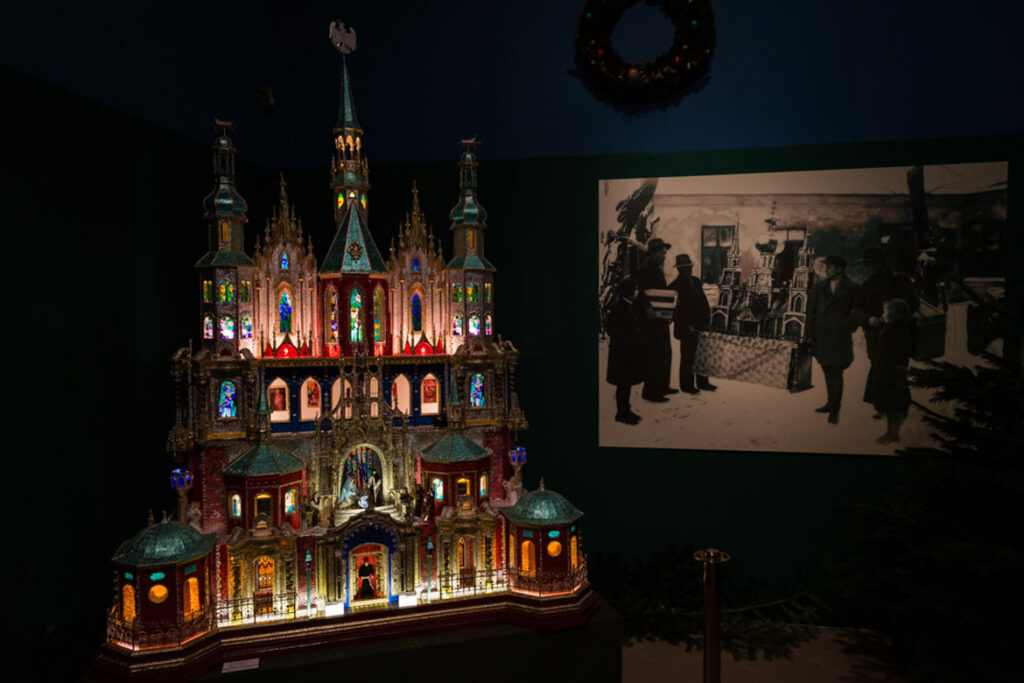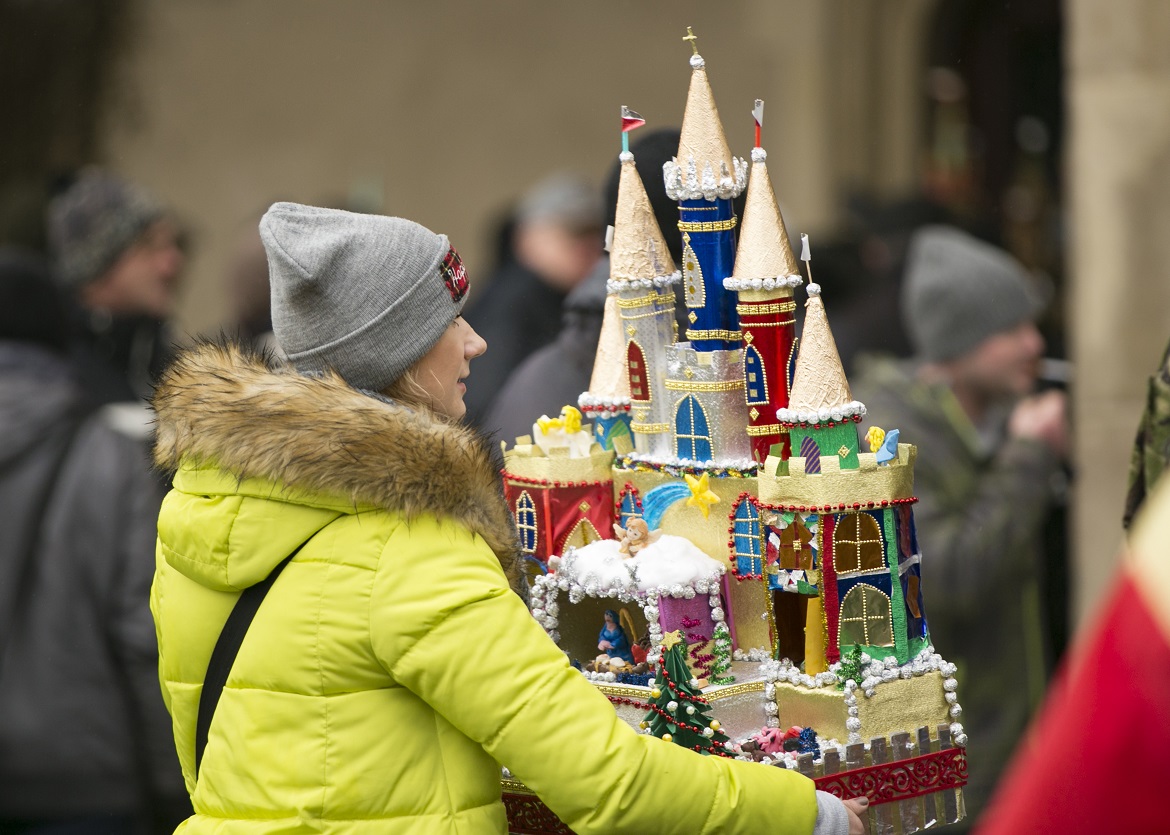Cracow nativity scenes are finely constructed, multi-storeyed and richly decorated structures, made of light and disposable materials. They include, especially today, miniatures of Cracow monumental architecture, imaginatively interwoven and connected. The nativity scene is an element of the great mystery of the birth of the Son of God. It originated in 19th-century Cracow and differs remarkably from what has been created on this theme elsewhere in the world. The tradition of building a nativity scene during Christmas originates from the tradition of the static scenes, which were arranged in churches during the Christmas period. These were mainly nativity scenes from Bethlehem, with a rocky landscape in the background. They were completed with small figures of the Child in the cradle, Mary and Joseph.
The first Krakow nativity scenes originated in the mid-19th century. They were made by carpenters and masons from the Cracow area, especially from Zwierzyniec. The activity kept them busy outside the building season. During Christmas they walked from house to house with their nativity scenes. By the second half of the 19th century two kinds of nativity scene emerged: a small one, without much fuss, which was intended for under the Christmas tree and a large one, sometimes up to 3 meters high, adapted for a mobile puppet theatre with specially written texts and music.
The tradition of performing nativity scenes disappeared during the First World War. However, it was revived when in 1937, the first competition for the most beautiful Cracow nativity scene was organized. Although it was not possible to include the accompanying puppet show, the tradition to run a nativity scene competition was born. The organizer was the Historical Museum and the winning nativity scenes were exhibited afterwards. The Museum has been building up its own collection since 1945. At present it has the richest collection of Cracow nativity scenes in the world, tracing the development and changes in nativity scene art.
These changes are reflected in the choice of material, lighting, construction, architecture, decoration, colours and the variety of figures that appear there. The figures refer to the times we live in, or to the important events of the past. Inspired by the monumental character of Cracow, consisting of different styles, the Cracow nativity scenes are architecturally very varied. And it is precisely this variety of different styles within one object that is the main asset of the Cracow nativity scene and at the same time the factor of its constant development. Inspired by the Cracow architectural sites the makers build nativity scenes that are reminiscent of fairytale palaces. In many of them we find the Renaissance arcades of the Cloth Hall, Gothic church towers, arched windows, colourful stained-glass windows and many other Cracow features.
The Cracow nativity scene, imaginary but still referring to the architecture and the unique atmosphere of the city, is also a great history lesson, with aesthetic values. They are beautiful, richly decorated yet playful, educational and emotionally moving.

Source: Polish Tourism Organisation https://www.polen.travel/.



